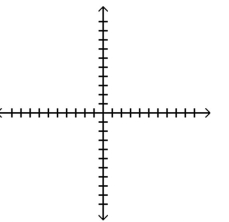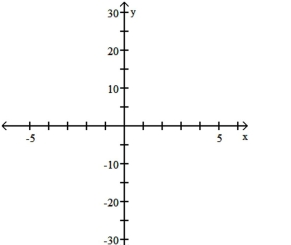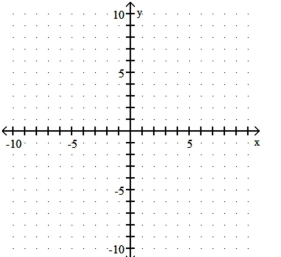A) 0 or 2 positive; 1 or 3 negative
B) 1 positive; 2 negative
C) 1 positive; 1 or 3 negative
D) 1 positive; 1 negative
Correct Answer

verified
Correct Answer
verified
Multiple Choice
Solve. -The profit made when units are sold is given by for . Determine the values of for which (a loss is taken) .
A)
B)
C)
D)
Correct Answer

verified
Correct Answer
verified
Multiple Choice
Solve. -
A)
B)
C)
D)
Correct Answer

verified
Correct Answer
verified
Multiple Choice
Find the horizontal asymptote, if any, of the rational function. -
A)
B)
C)
D) None
Correct Answer

verified
A
Correct Answer
verified
Multiple Choice
Graph the function, showing all asymptotes (those that do not correspond to an axis) as dashed lines. List the x- and
y-intercepts.
-

A) No -intercepts, -intercept: ;![]()
B) No -intercepts, -intercept: ;![]()
C) x-intercepts: and ,![]()
D) x-intercepts: and , y-intercept: ; -intercept: ;![]()
Correct Answer

verified
Correct Answer
verified
Multiple Choice
Sketch the graph of the polynomial function. Use the rational zeros theorem when finding the zeros.
-

A) ![]()
B) ![]()
C) ![]()
D) ![]()
Correct Answer

verified
Correct Answer
verified
Multiple Choice
Find only the rational zeros. -
A)
B) 7,1
C)
D) No rational zeros
Correct Answer

verified
Correct Answer
verified
Multiple Choice
Find the requested polynomial. -Find a polynomial function of degree 3 with as zeros.
A)
B)
C)
D)
Correct Answer

verified
Correct Answer
verified
Multiple Choice
Use the leading-term test to match the function with the correct graph. -
A) ![]()
B) ![]()
C) ![]()
D) ![]()
Correct Answer

verified
Correct Answer
verified
Multiple Choice
Use the leading-term test to match the function with the correct graph. -
A) ![]()
B) ![]()
C) ![]()
D) ![]()
Correct Answer

verified
D
Correct Answer
verified
Multiple Choice
Provide the requested response. -Suppose that a polynomial function of degree 4 with rational coefficients has 6, 4, 3i as zeros. Find the other zero.
A) 3- i
B) - 3i
C) -6
Correct Answer

verified
Correct Answer
verified
Multiple Choice
Use long division to determine whether the binomial is a factor of f(x) . -
A) Yes
B)
Correct Answer

verified
Correct Answer
verified
Multiple Choice
Solve the inequality. -For the function , solve .
A)
B)
C)
D)
Correct Answer

verified
Correct Answer
verified
Multiple Choice
Solve. -
A)
B)
C)
D)
Correct Answer

verified
Correct Answer
verified
Multiple Choice
Find the vertical asymptote(s) of the graph of the given function. -
A)
B)
C)
D)
Correct Answer

verified
B
Correct Answer
verified
Multiple Choice
Solve the inequality. -For the function , solve .
A)
B)
C)
D)
Correct Answer

verified
Correct Answer
verified
Multiple Choice
Provide the requested response. -Suppose that a polynomial function of degree 5 with rational coefficients has as zeros. Find the other zero(s) .
A)
B)
C)
D)
Correct Answer

verified
Correct Answer
verified
Multiple Choice
Graph the function.
-

A) ![]()
B) ![]()
C) ![]()
D) ![]()
Correct Answer

verified
Correct Answer
verified
Short Answer
Find the correct end behavior diagram for the given polynomial function.
-

Correct Answer

verified
Correct Answer
verified
Multiple Choice
Use synthetic division to find the quotient and the remainder. -
A)
B)
C)
D)
Correct Answer

verified
Correct Answer
verified
Showing 1 - 20 of 94
Related Exams